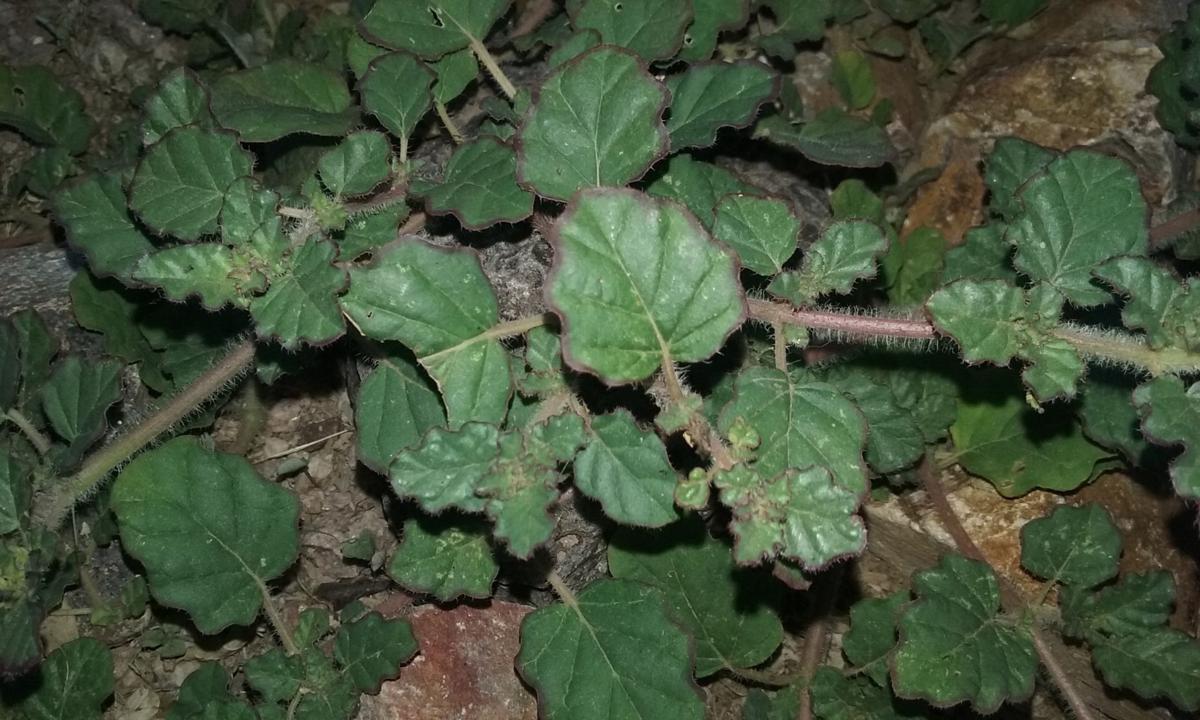Question: I have the weed in the attached picture growing after lots of summer monsoon weather in Tucson. Can you help me identify it?
Answer: The plant is called Coulter’s spiderling (Boerhavia coulteri) and it’s an annual in the four o’clock family (Nyctaginaceae). It can be easily found in washes and flat areas in the Sonoran Desert. I have some in my yard if you need any. It spreads like a groundcover, it produces spikes of tiny pink flowers, and it reproduces by seed. It’s native to the Southwest and found throughout most of the state. It is especially noticeable in summer in Southern Arizona. Some call it a weed and others call it a wildflower since it’s a native. It certainly grows like a weed so you have to decide if you like it enough to keep it or dislike it enough to pull it up before it produces seed.
Q: We have an infestation of fungus gnats inside our house. We have had our bug service spray the plants, the windows, everything twice. They have put granular insecticides in each plant soil twice,and even tried mosquito crystals. Then we had the two rooms containing the plants bombed. Our exterminator used PT Pro-Control Formula 2 (one can in each room). We completely sealed off the rest of the house. Two days later they were back, about 40 percent of what they were. We have a fluorescent light that has a sticky back that we were filling up nearly daily; now it takes about two days to fill. But we still have the gnats. Do you have any suggestions on how to get rid of these persistent bugs?
A: Fungus gnats are often found in places that are moist, have decaying plant matter, and, of course, fungus. The larvae of these flies feed on the fungus so that is where the adults lay their eggs. The management method that works best is making the habitat less inviting. With indoor plants this often means less watering to allow the soil to dry out between watering, killing off the fungus. You can also repot and lightly prune plants that seem to have a lot of decaying material and fungus present. There are products that are effective against the gnats but if you continue to provide the fungal habitat, they will be back. Sticky traps are great for monitoring your progress in reducing the population and their habitat.
Q: Every year at this time I have a problem with spider mites attacking my orange jubilee and torch bougainvillea. I’ve tried everything but nothing seems to stop them (except hosing them down). Any suggestions?
A: The hose is a good solution, especially in drier times of the year. Since mite infestations are directly proportionate to increasingly warmer and drier temperatures, it would be best to keep an eye on these plants early in the spring and knock back the populations before they get out of hand. Also be sure to maintain the overall health of the plant so it can better handle the pest pressure. Irrigate in dry weather, of course, and avoid over fertilization because the extra nitrogen makes them more attractive. In addition to the hose, infested areas can also be sprayed with insecticidal soap and horticultural oil products. During the winter or early spring control can be obtained with a dormant oil application in many cases. During the summer or growing season use a miticide or insecticidal soap. Check local stores to see what’s for sale. Most insecticides are not effective on mites and some, especially broad-spectrum products such as carbaryl (Sevin) result in increased mite damage by killing their natural enemies. The important thing is to check the label to make sure a product is not hazardous to beneficial predators. And of course any time you use a pesticide it is important to read the label for your own safety and the safety of nontarget organisms around the area.
Q: I have a number of Afghan pines that have some whitish cottony stuff on the ends of many branches. Can you tell me what this is and if it is a problem?
A: The pine samples I collected show signs of insects in and around where the needles attach to the stem. These insects are called adelgids and they make the white, cottony material to protect them from the environment. High populations can cause yellowing, early drop of needles, drooping and dieback of terminals, and can slow the growth of trees. Vigorous plants tolerate moderate adelgid populations so the best plan is to keep your trees healthy. Appropriate watering and fertilization is important. These trees need deep watering every seven to 14 days in the summer to a depth of 24 to 36 inches. In the spring and fall, water them every 10 to 21 days and in the winter every 14 to 21 days. Avoid excess fertilization and quick-release formulations, which can promote adelgid populations. A forceful stream of water directed at the cottony masses dislodges and kills many adelgids when they are active in the spring.





